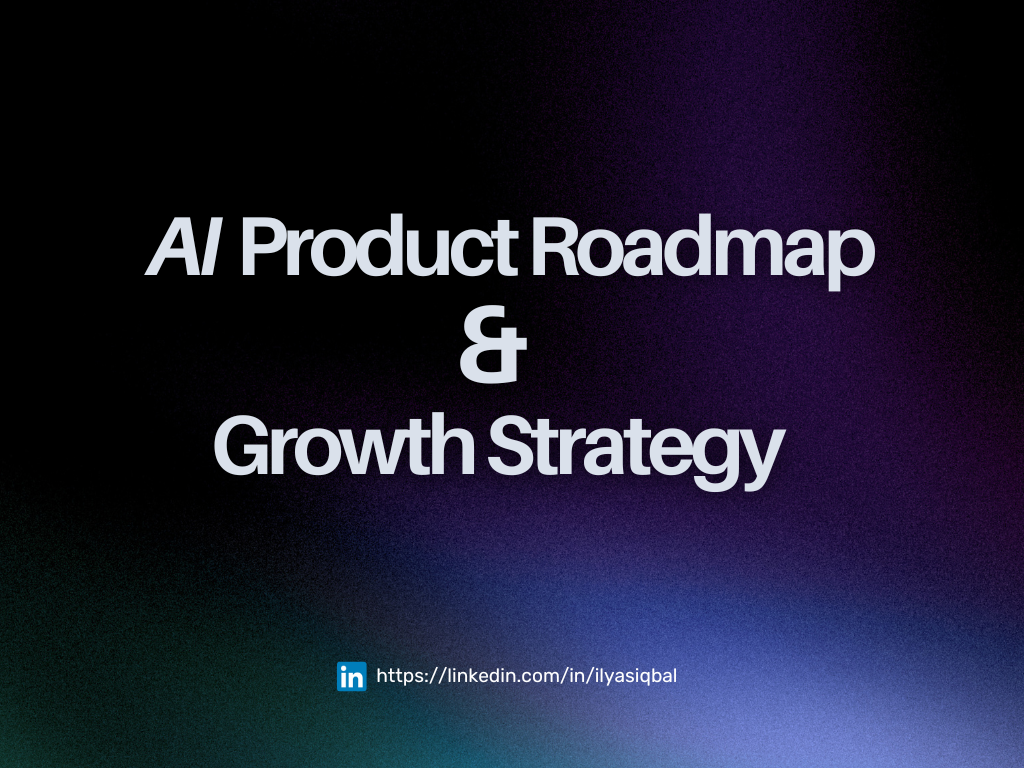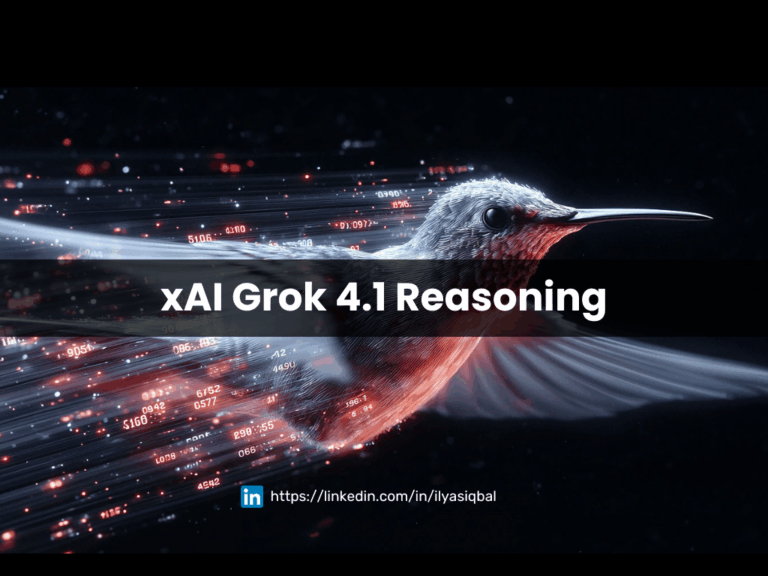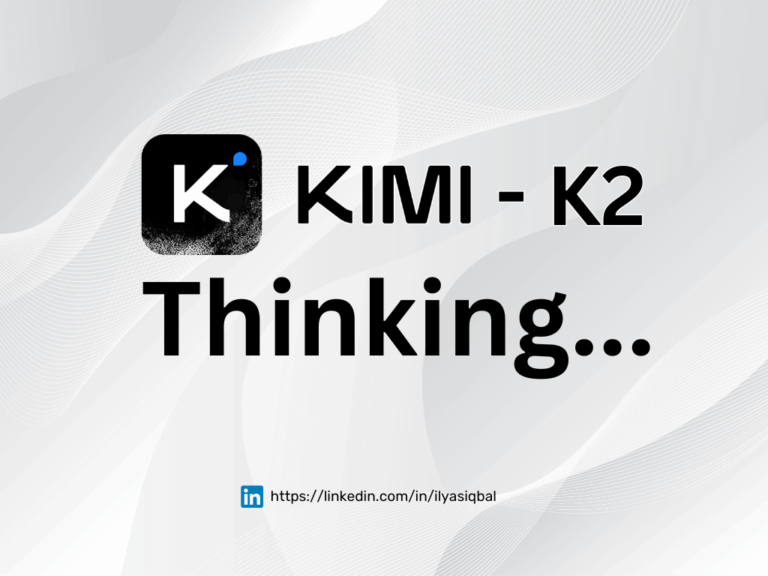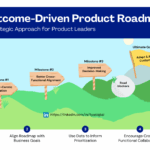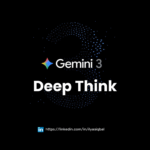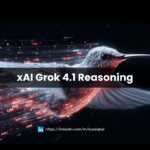In today’s hyper-competitive and globally connected internet world, AI isn’t just adding value as a feature, it’s becoming the backbone of product innovation. As an entrepreneur and AI researcher, I’ve seen tons of product roadmaps and how a well-designed AI product roadmap can transform ambiguity and challenges into actionable strategy, which can certainly turn startups into business leaders. Here we will go through from tactical frameworks with real-world execution insights, tailored for business leaders, product teams, and founders ready to demystify and harness AI’s compounding potential. So, without further ado, let’s dive in!
Also read: GLM 4.5 – Open-Source AI Model For Agentic Applications
What Is a Product Roadmap?
First thing first, let’s understand what is a product roadmap. A product roadmap is the strategic compass or pathway that aligns your team’s execution with long-term vision set by the top leadership. Unlike static project plans, it’s a visual document that balances customer pain points or requirements, business goals, and technical feasibility. For many agile teams, it helps in providing a good level of context for daily decisions while keeping stakeholders aligned on priorities. People who understand agile, would know this by heart.
Here is the list of some of the key components:
- Vision: That is the “why” behind your product’s evolution. Very important!
- Initiatives: Add high-level themes (e.g., “Improve onboarding conversion by 30%”).
- Timelines: Definite but keep it flexible
- Outcomes: Metrics tied to business impact and value (e.g., retention, revenue).
For leaders, make sure to always use roadmaps to bridge the gap between C-suite objectives (e.g., revenue growth) and engineering sprints. Tools like Jira Product Discovery helps to automate prioritization and stakeholder updates.
Also read: Open AI GPT-5: Expected Features, Ethics, Benchmarks and Limitations
2. What Is an AI Product Roadmap?
Now you know what is a product roadmap, let understand what is an AI product roadmap and how that is a specialized plan that integrates Artificial Intelligence, machine learning (ML) and data-centric workflows into product development. It is important to now that unlike traditional roadmaps, AI product roadmap accounts for:
- Probabilistic Outputs: Generally, we are experiencing that the AI models don’t guarantee deterministic results as they are still going through the evolutionary phase, so plan for variability.
- Data Dependencies: Prioritize initiatives based on data readiness (e.g., labeled datasets for NLP). Additionally, you need to have a good team of data engineers for data labling, data cleansing, data pipelining, and automation.
- Feedback Loops: Try to find a way to design systems where user interactions improve model performance over time. That can be achieved using iterations and memory usage. Of course it can get expensive in the beginning but more affordable later on.
For instance: I have worked with AI driven healthcare product, the process could be tedious but normally a healthcare startup’s AI roadmap might could look like as:
- Data Collection (HIPAA-compliant patient records, make sure to always use data anonymisation techniques).
- Model Prototyping (diagnostic accuracy benchmarks).
- Deployment (FDA-approved API integration).
For entrepreneurs, it’s of paramount importance to understand that the AI roadmaps require continuous iteration. Tools like MLflow or TensorFlow Serving streamline model monitoring and retraining and the process can take longer based on the requirements.
Also read: AI Strategy for Product Leaders to Build Intelligent Products
3. Designing the AI Product Roadmap Plan
Step 1: Define AI-Specific Success Metrics
- Technical: Use tools to get correct model accuracy, latency, scalability. Model providers also offer those numbers on their websites.
- Pricing: Various options to choose from e.g; Cost per inference or tokens
Step 2: Map Dependencies
- Data: Define the data sources, Scrape them or use APIs, clean and label data (tools: Scrapy, AWS SageMaker Ground Truth).
- Infrastructure: Cloud GPUs vs. edge deployment (cost/performance trade-offs).
Step 3: Adopt Adaptive Frameworks
- Now-Next-Later: Use AI tools like which offers dynamic reprioritize based on real-time market signals
- Outcome-Driven: Link features to KPIs (e.g., “Chatbot reduces support tickets by 25%”).
Product leaders should avoid the “Cool Demo Trap” and only focus on the last 20% of reliability before scaling. Don’t add new features to the roadmap which is currently being followed and have already set the list of prioritized features/tasks unless it is mutually agreed with all the stakeholders and has an urgent priority. Anything else can be answered with a simple no, and the teams should respect that.
Also read: Applying Design Thinking to build innovative Cloud based AI Products
4. Building AI Product Roadmap Strategy
By this stage the AI product roadmap should be well-planned and agreed on with all the stakeholders. Let’s dive into building the AI product strategy and how that can help delivering the message to the team-wide adaption. That means, the data engineers, UI/UX, AI engineers, DevOps, etc.
- Data Moats:
Generally speaking, a data moat refers to the competitive advantage a company gains by having unique, proprietary data that competitors find difficult to replicate. That could also mean that the data is completely owned by you, from collection, analyzing, and using data in ways that your competitors don’t. That also leads to build better products. In other words, something you fully own and is unique datasets (e.g., proprietary user behavior logs). - Behavioral Moats: Design UX that reinforces AI learning. Many modern AI based learning platforms are using that (e.g., Duolingo’s speech feedback loops).
- Workflow Moats: Embed AI into core workflows. Also use KPIs and OKRs to highlight the execution and it’s impacts during demo meetings. (e.g., Notion’s AI autocomplete).
Also read: Designing High-Performance Product Strategy: A Leader’s Perspective
5. Building a Team-Specific AI Product Roadmap
Once the roadmaps are designed, it’s time to start the implementation within the teams. Again, the important is:
- How well-aligned all the stakeholders are?
- Have you defined the goals properly and clearly?
- Are the backlog items are fully refined?
- Does each team member understand what they are going to deliver during a specific sprint?
- Are they having access to AI frameworks, LLM models, APIs and infrastructure?
Make sure to have them figured and answered before you hit the start button. Anything left untouched or unaligned would be paid in terms of spillovers, and none of the top leaders would like that. Following are the teams setup which might look like in delivering and execution:
Data Engineering
- Phase 1: Data sources consolidation and pipelines development (Data lakehouse)
- Phase 2: DevOps (Kubeflow, Docker).
AI Engineering
- Phase 1: Model development (PyTorch, Hugging Face).
- Phase 2: MLOps (Kubeflow, Docker).
Product
- Phase 1: Validate AI use cases (A/B testing).
- Phase 2: Scale adoption (User behavior tracking)
6. Building a Company-Wide AI Product Roadmap
One of the most difficult stage which I have personally experienced and found in all these years was to have an alignment with all stakeholders, company-wide. You should act as a change manager/agent to make that happen. It may drain your energy, but if you stay consistent, you’ll see the other teams/leaders would reach out to you to help them as well. So, choose wisely. But here are few of the levels to have an aligned AI initiatives with organizational maturity:
- Level 1 (Pilot): This is an initial stage of AI product roadmap adaption at an organizational level. Usually used for the isolated use case scenarios (e.g., churn prediction).
- Level 2 (Scaled): Second level becomes a little more strategic as you grow. Can be very helpful in a cross-functional AI products (e.g., Salesforce Einstein).
- Level 3 (AI-First): This is the top tier level and pretty advanced to adapt, carry and execute. You become an AI core differentiator (e.g., companies like OpenAI’s GPT ecosystem).
7. Driving Results from AI Product Roadmap
You will be measuring and iterate at each success or fail state. Ensure that the stats are shared with the team members, so they help each other to improve the LLM model performance. Find out the leading vs. lagging indicators. Such as:
- Leading Indicators: Model drift detection (Prometheus, Grafana).
- Lagging Indicators: Revenue impact (Snowflake + Looker dashboards).
8. Conclusion
An AI product roadmap isn’t just a planning artifact, it’s the operating system for building defensible, scalable intelligence into your futuristic product. As entrepreneurs and product leaders, our goal isn’t just to chase AI trends and ride the bandwagon just to be included, but to design and architect the right systems where AI helps to maximize business value.
Key Takeaways for Execution:
- For Founders/C-suite executives: It is important that you treat your AI roadmap as an asset. The companies which are winning in 2025 aren’t those with the most advanced models, but those who have a tightly couple AI iteration with customer workflows.
- For Product Teams: You must shift from “Can we build it?” to “Should we?”, and use frameworks with data readiness to avoid any technical debt.
- For Organizations: Take initiatives to break the silos by aligning AI roadmaps across departments. A unified AI driven data strategy should be enabled so every team benefits from it.

